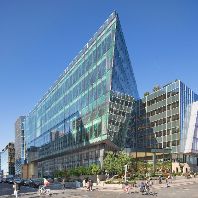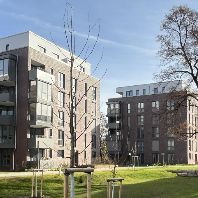Approximately 625,000ft² (58,063m²) of office space in Manchester is set to be refurbished over the next two years as the market responds to continuing levels of healthy take up, according to Savills. The firm reports that grade-B has accounted for an average of 62% of the city’s annual take up over the last 10 years, and with grade-A supplies running low the proportion could be even higher in 2016 as occupiers and landlords look to ‘plug the gap’.
Despite growing demand for grade-A office space in Manchester over the last three years, annual take up has consistently been underpinned by larger grade-B occupiers seeking to balance high quality offices with value for money. As a result, the current planned refurbishment pipeline is expected to last a little over two years. Increased competition for the space is already driving secondary rents upwards, for example at Acresfield in St Ann’s Square, where rents have moved from £16.50/ft² (€225.28/m²) to £18.50/ft² (€252.59/m²) in just over 12 months.
In terms of occupiers, the TMT sector is reported to have taken more grade-B space in Manchester than any other sector over the last five years, with deals totalling 710,889ft² (66,042m²). This is a significant increase on the 294,631ft² (27,371m²) of secondary space let to TMT occupiers in the previous five years. Grade-B demand from professional services and business and consumer services firms has also been significant, with deals totalling 595,665ft² (55,337m²) and 546,738ft² (50,792m²) respectively since 2011.
Clare Bailey, associate director in the research team at Savills, commented: “Much has been made of the TMT sector as a rising star and it has indeed grown significantly. However, the term encompasses such a breadth of occupiers that it is perhaps more accurate to think of the growth of ‘new’ occupiers, namely those seeking to capitalise on technology developments and new media. Many operate within long-standing sectors such as finance and insurance but are now seeking more creative workspaces. The challenge for landlords and designers, given the rate of construction inflation, is to create these workplaces at a commercially viable cost for such businesses which often have immature financial covenants and need shorter term leases to allow them to grow.”
James Evans, head of Savills Manchester, added: “This year’s winners will undoubtedly be landlords who can deliver space to the market quickly and therefore capitalise on the current under supply across all sectors. Opportunities for large-scale occupiers within the grade-B market are very limited and with continued growth forecast for the financial tech sector in particular, buildings which can provide flexible and interesting workspaces will succeed. However, solid fundamentals remain key and large floor plates in accessible locations will continue to perform very well.”















